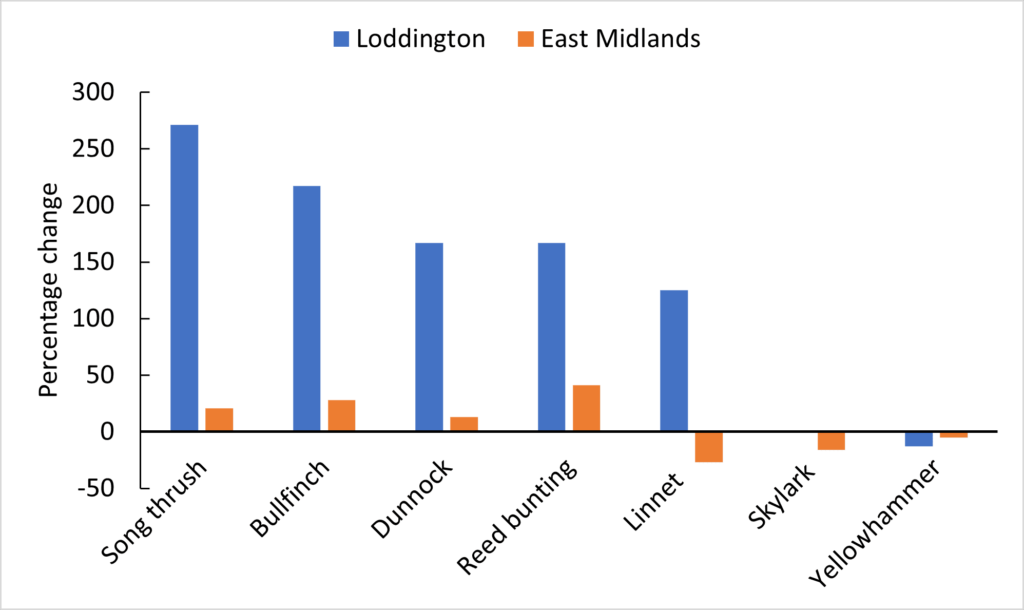As farmers across the country focus their attention on the Big Farmland Bird Count it’s time to reflect on how songbird numbers on our own farm have changed since the Allerton Project started thirty years ago.
Overall numbers of breeding songbirds doubled in the first seven years of the project in response to management by our gamekeeper at the time, Malcolm Brockless, comprising habitat management, winter feeding and predator control. This was a remarkable achievement against the context of continuing declines across the country.
We monitor bird numbers using a combination of annual transects which provide an estimate of relative abundance, and a detailed census of all breeding birds which we carry out every five or six years. Despite removing many of the beneficial management practices for research purposes in the second decade of the project, causing bird numbers to drop, our recent transects reveal that songbird numbers have bounced back and in 2021 were 191% above the 1992 baseline year.
The detailed territory mapping is particularly useful for assessing numbers of the less numerous species and the data from the 2021 territory mapping are just in. As indicated by the transect data for overall songbird abundance, the territory mapping data reveal that many species have increased substantially, but not all have done so.

It is particularly interesting to consider the species that declined nationally between the 1970s and 1990s and are ‘red-listed’ as a cause for conservation concern. Some of these have subsequently increased slightly nationally, and regionally in the East Midlands (based on BTO data), while others have experienced slight continuing declines.
Those species that have increased slightly in the East Midlands have increased very substantially at Loddington, while skylark and yellowhammer which have declined slightly in the region, have not increased at Loddington.
It is gratifying to record the considerable conservation success for species such as song thrush, dunnock, bullfinch, linnet and reed bunting. As well as increasing numbers at Loddington, improved adult survival and breeding success may be contributing to the wider population of these species through dispersal from the farm. This may even be the case for skylark and yellowhammer.
uch of our management is known to benefit these species, along with others, and it is possible that abandoned territories in the area around Loddington are being occupied by birds dispersing from the farm rather than remaining on it to swell the breeding numbers. We cannot know for sure, but it is good to report that songbird numbers at Loddington are very considerably higher than they were when we took the farm on thirty years ago.
The 2022 Big Farmland Bird Count takes place from 4-20 February – find out how you can take part here.

Brilliant information and thoroughly reliable reporting.